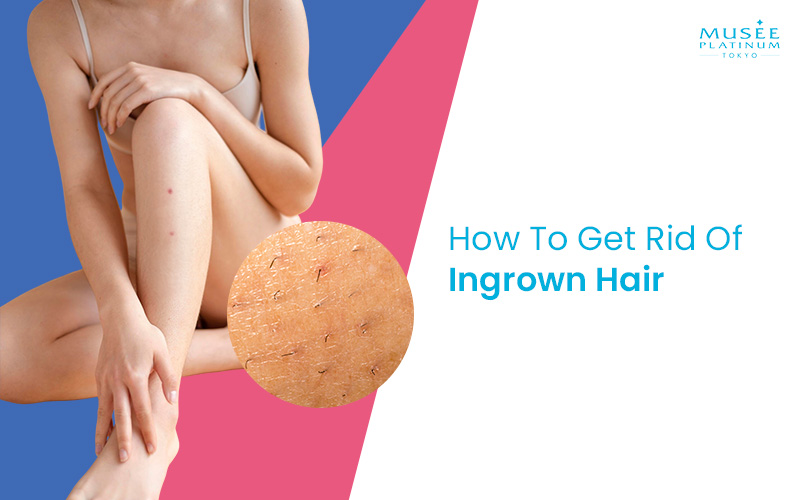
Ingrown hairs might seem like a minor inconvenience, but for many people, they cause ongoing discomfort and persistent skin irritation. These small, often painful bumps usually appear after shaving, waxing, or tweezing, when strands of hair grow sideways or curl back into the skin instead of emerging properly from the follicle. What starts as mild redness can quickly develop into inflamed spots that affect not just your skin's condition but also your confidence.
Although anyone can experience ingrown hairs, some individuals are more prone to them than others due to factors such as hair texture, skin sensitivity, and personal grooming habits. In Singapore's humid climate, where regular hair removal is part of many routines and skin is frequently exposed to sweat and friction, the issue is widespread. Without proper care, it can lead to complications such as pigmentation, long-lasting irritation, or even scarring.
Learning how to get rid of ingrown hair requires more than just surface-level solutions. It involves understanding what's happening beneath the skin and choosing the right combination of prevention and treatment to address it effectively.
In this article, we'll explore how to get rid of ingrown hair, its causes, and its impact on the skin. You'll also find practical self-care tips and learn about professional options, including Musee Platinum Tokyo's advanced S.S.C. Hair Removal technology, designed to support smoother, clearer skin through a tailored hair removal service.
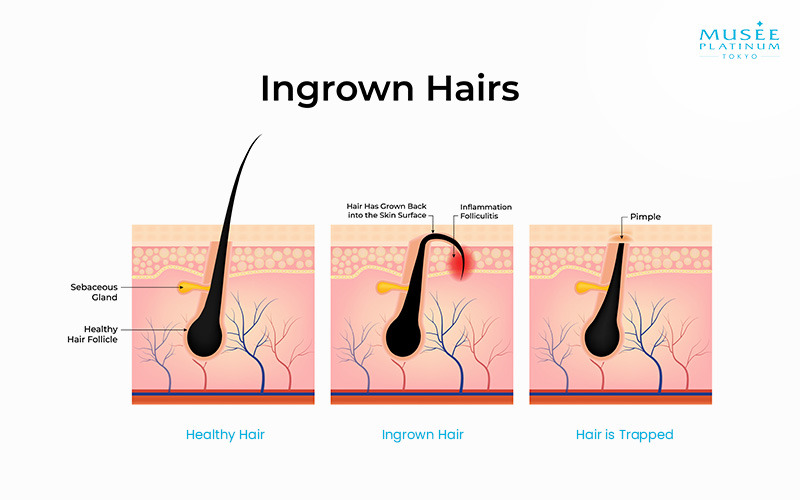
Ingrown hair is a common skin concern, but many people are unsure of its causes or why it recurs. At its core, ingrown hair develops when a strand fails to grow outward through the follicle and instead curls back or grows sideways into the skin. Rather than emerging as expected, the hair becomes trapped, triggering irritation and inflammation.
When this happens, it often appears as a small, red bump that may resemble a pimple or a blister. In some cases, the hair is visible just beneath the surface. These bumps can feel sore, itchy, or tender, especially in areas where hair removal is frequent. If the bump becomes infected, it may fill with pus and take on an acne-like appearance. While the spot itself may be small, the discomfort and frustration can last far longer.
Understanding how to get rid of ingrown hair begins with understanding what causes it in the first place. Under normal conditions, hair grows straight through the follicle and exits cleanly through the skin’s surface. But when the path is blocked by dead skin cells, or when the hair is cut too short or at a sharp angle, it may re-enter the skin instead of breaking through.
Hair removal is one of the most common triggers of ingrown hair. Shaving too closely, waxing improperly, or pulling hair from the root can all disrupt the natural growth cycle. Without the correct aftercare, this disruption can make the skin more prone to recurring ingrown hairs, particularly in areas that experience friction, such as the bikini line, underarms, or neck.
To truly address the problem, it is helpful to consider both prevention and treatment strategies. If you want to know how to get rid of ingrown hair and keep it from coming back, the key lies in a combination of gentle skincare and long-term solutions that target the root of the issue.
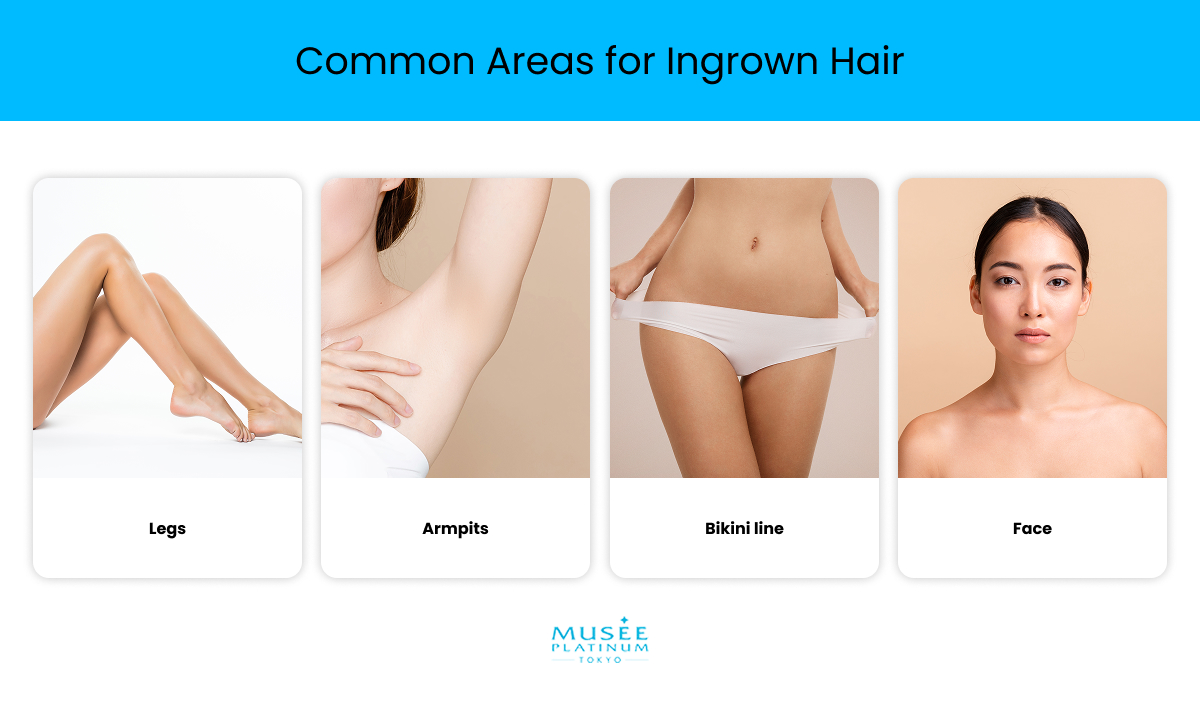
Some areas of the body are more prone to developing ingrown hairs than others. This often comes down to hair texture, the frequency of hair removal, and the amount of friction the skin experiences from clothing. Recognising where these bumps tend to appear can help you take more targeted preventive steps and better understand how to get rid of ingrown hair in problem areas.
It's not just about where hair grows. Personal factors such as skin texture and grooming habits also play a significant role. People with tightly curled hair are naturally more prone to ingrown hairs, as the strands tend to loop back toward the skin. Dry or rough skin can increase the likelihood of follicle blockage, and hair removal routines that irritate the skin or disrupt hair growth patterns only make the issue worse.
Learning how to get rid of ingrown hair means paying attention to these contributing factors and adjusting your skincare and grooming practices to suit your needs better.
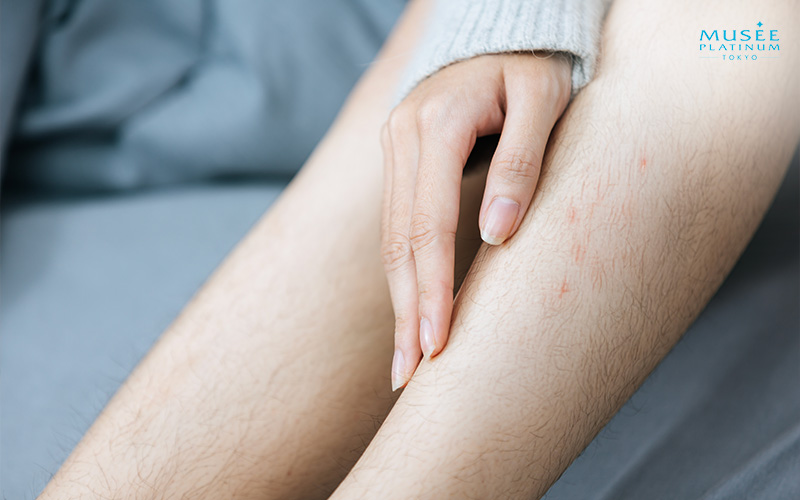
A variety of factors can lead to the formation of ingrown hairs. Understanding these causes is crucial for prevention, long-term relief, and more effective management of ingrown hairs. Whether it starts with grooming habits, clothing choices, or skin conditions, understanding what triggers these bumps can help you make more informed decisions about skincare and body hair removal.
Knowing how to get rid of ingrown hair begins with recognising the root causes, not just treating the symptoms.
Shaving, waxing, and plucking are the most common culprits. Each method affects the skin and hair differently:
Tight or non-breathable clothing does more than cause discomfort. It creates friction that irritates the skin and puts pressure on hair follicles, especially around the thighs, waistline, and bikini line. When combined with heat, sweat, or synthetic fabrics, this friction can lead to clogged pores and increase the chance of ingrown hairs forming.
Curly or coarse hair is more likely to grow in a spiral or curve, making it easier for the hair to re-enter the skin after being cut or disrupted. Even without direct hair removal, individuals with this hair type may develop ingrown hairs simply because the hair struggles to emerge from the follicle without curling back.
Dry or flaky skin often leads to the accumulation of dead skin cells around hair follicles. Without regular exfoliation, this buildup can trap growing hairs, preventing them from reaching the surface.
Conditions like acne or folliculitis can further increase the risk by causing inflammation around the follicles. When combined with poor skincare habits or the use of unsuitable products, the likelihood of recurring ingrown hairs increases significantly.
To figure out how to get rid of ingrown hair effectively, it's essential to consider both prevention and ongoing skin maintenance. A tailored approach that includes proper hair removal methods, gentle exfoliation, and moisturising can go a long way in keeping your skin clear and comfortable.
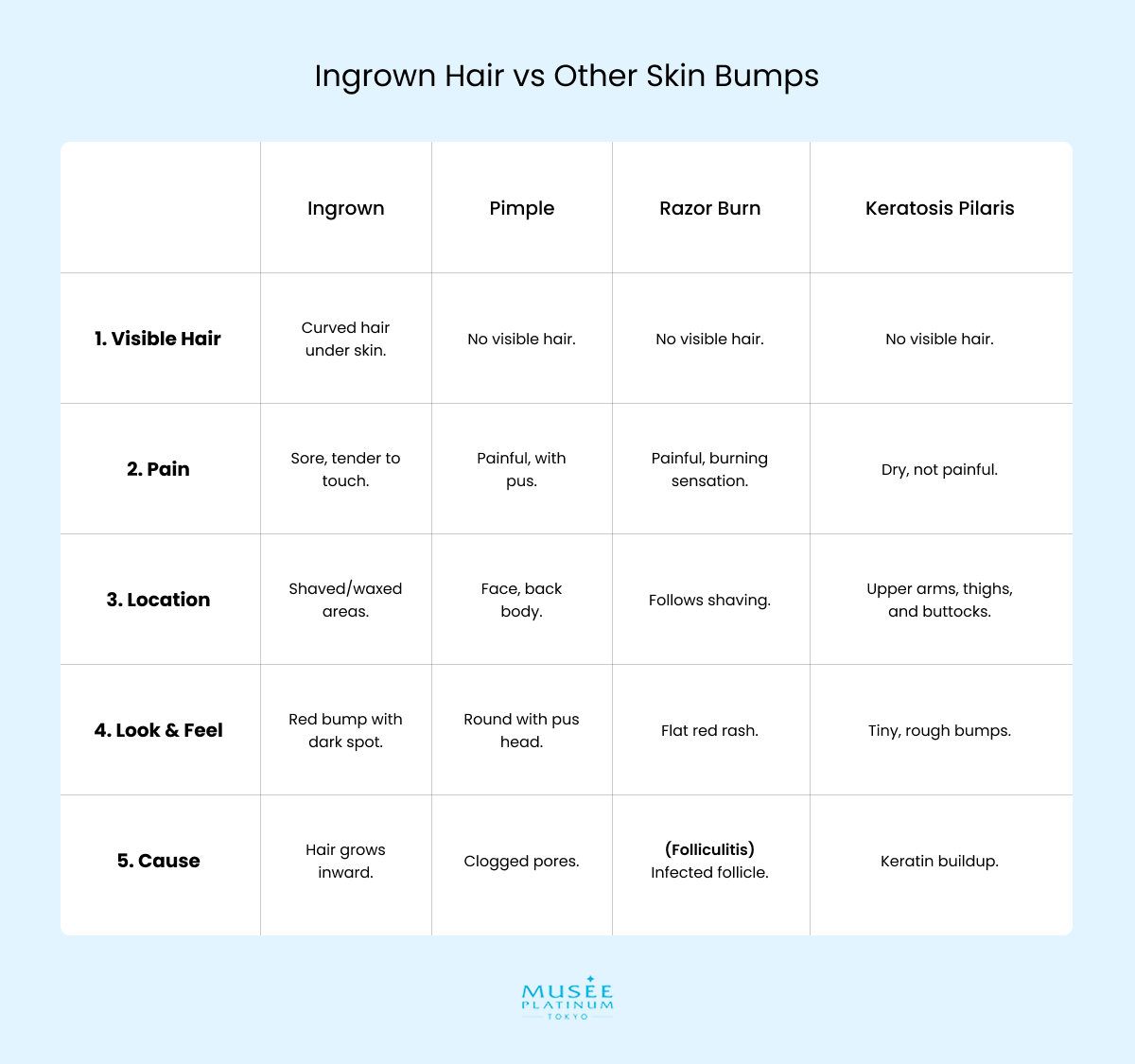
Though small in size, ingrown hairs can cause outsized problems. What begins as a mild irritation can quickly turn into a painful and persistent skin concern, especially when left untreated. The impact goes beyond the physical. It often affects how you feel in your own skin.
It typically starts with a sharp sting as the hair curls back into the skin. For many, this discomfort lingers, turning into a dull, throbbing ache. Everyday activities, such as walking, sitting, or wearing close-fitting clothes, can become uncomfortable. The constant itch can be hard to ignore, and scratching only worsens the situation.
The skin around the affected area may become sore, making even light contact with fabric or towels feel unpleasant. This is particularly true in areas such as the underarms, bikini line, or neck.
One of the most visible signs of ingrown hair is inflammation. The skin often becomes red, flushed, or irritated. In some cases, a rash-like texture appears, creating rough or uneven patches. In humid environments like Singapore, this irritation can be prolonged, especially when the skin is exposed to sweat, friction, or repeated grooming.
As the hair remains trapped under the skin, pressure builds. This often leads to small, swollen bumps that resemble acne. These may start soft but can become firm or develop into painful nodules. In some cases, you can even see the hair looped under the skin, which adds to the discomfort and temptation to pick, a habit that tends to worsen the issue.
Learning how to get rid of ingrown hair is crucial at this stage. Treating the bump early can help reduce discomfort and prevent complications such as infection or scarring.
Picking or shaving over ingrown hairs increases the risk of infection. Once bacteria enters the irritated skin, it can result in pus-filled blisters or painful boils. If left untreated, the infection may spread to surrounding areas and require medical attention. In some cases, recurring infections in the same spot become a frustrating cycle.
Chronic irritation or repeated inflammation from ingrown hairs can lead to lasting skin changes. These include dark marks, uneven texture, or discolouration, particularly in areas that are regularly exposed. This often affects confidence and may take time to heal.
Knowing how to get rid of ingrown hair means more than just treating the bumps; it also involves understanding the underlying causes. It involves addressing the underlying causes and adopting care practices that help protect both your skin's health and your self-esteem.
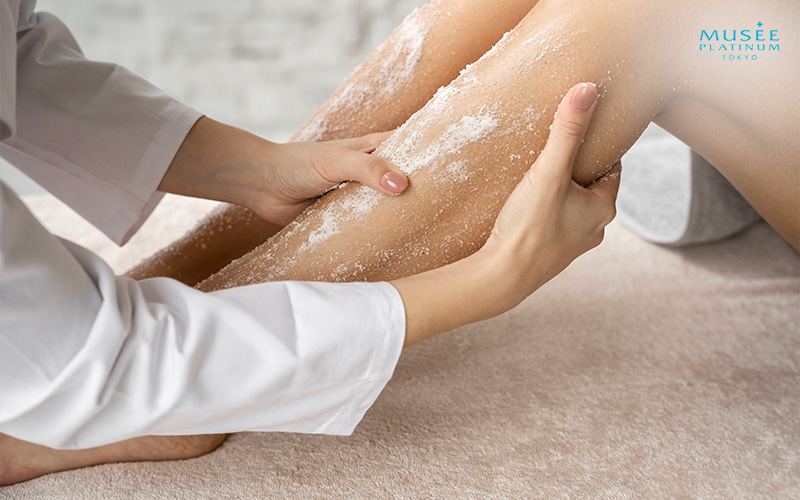
If you're wondering how to get rid of ingrown hair and keep it from coming back, small but consistent changes to your skincare routine can make a real difference. Prevention starts with keeping the skin clear, hydrated, and irritation-free.
Exfoliating two to three times a week removes dead skin cells that can block follicles. A soft scrub or exfoliating mitt helps keep the surface smooth, allowing hair to grow out properly. Avoid harsh exfoliants that could worsen irritation.
Shaving technique also matters. Always use a sharp, clean razor and shave in the direction of hair growth. Avoid dry shaving or repeatedly going over the same spot, and allow your skin time to recover between sessions, especially in areas prone to ingrown hairs or bumps.
Dry, tight skin increases the risk of trapped hairs. Use a fragrance-free moisturiser daily to keep your skin soft and barrier function intact. If irritation occurs, mild anti-inflammatory creams or exfoliants with salicylic or lactic acid can help. These ingredients are commonly found in skin irritation treatment products that support recovery and healing.
To truly learn how to get rid of ingrown hair, it's essential to build a skincare routine that prevents blockages and supports healing. Over time, these small habits can help keep your skin smooth, calm, and clear.
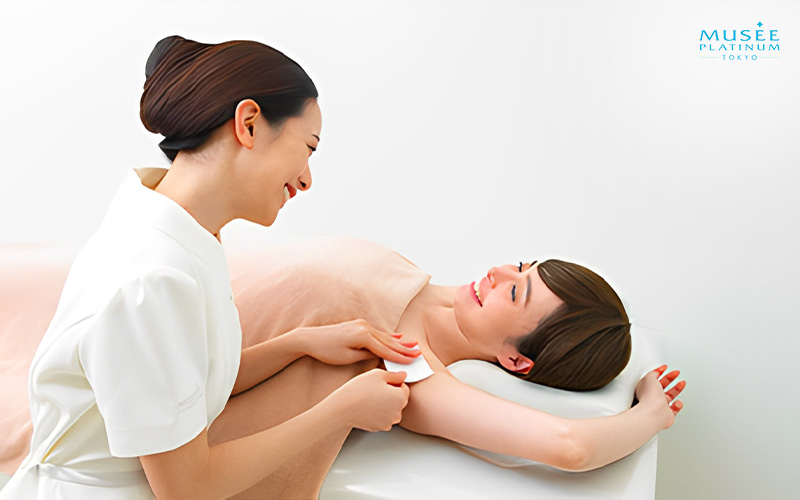
If self-care methods aren't providing lasting relief, or if ingrown hairs keep returning despite your best efforts, professional hair removal may offer a more effective and sustainable solution. Musee Platinum Tokyo’s Smooth Skin Control (S.S.C.) Hair Removal is a gentle, modern approach designed to address unwanted hair and support healthier skin over time. For those looking at how to get rid of ingrown hair in a long-term, low-discomfort way, this could be a meaningful next step.
S.S.C. Hair Removal combines advanced hair removal technology with skin-friendly care. The process uses filtered beams of light in tandem with a specially formulated gel. Once activated by light, the plant-based peptides in the gel begin to reduce hair regrowth while soothing the skin simultaneously. Unlike heat-based methods that may irritate sensitive skin, this approach focuses on minimising discomfort while weakening the hair's ability to grow back.
If you've been searching for how to get rid of ingrown hair without irritation, this treatment offers a thoughtful and comfortable solution.
These benefits position S.S.C. Hair Removal as a versatile option for those seeking not just convenience but also long-term hair removal solutions tailored to sensitive or problem-prone skin.
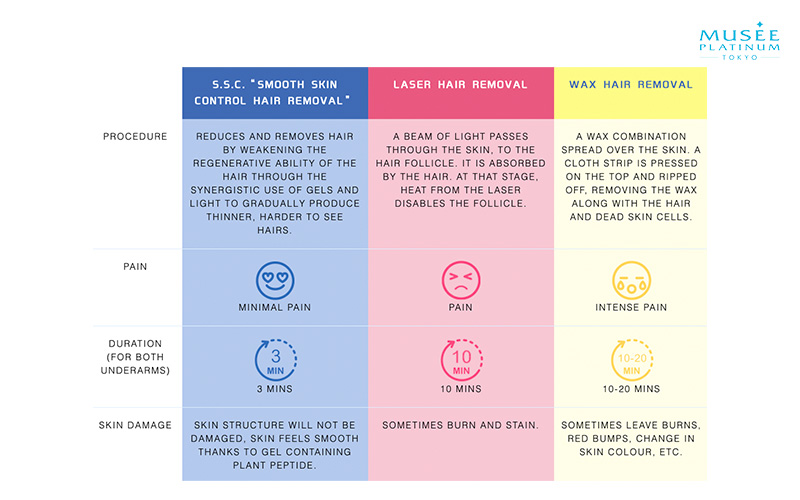
If you're experiencing recurring irritation, sensitive skin, or pigmentation issues after shaving or waxing, S.S.C. Hair Removal offers a more comfortable alternative. It supports both visible improvement and long-term skin health benefits. For anyone serious about how to get rid of ingrown hair in a safe, effective way, this technology offers a thoughtful balance of results and care.
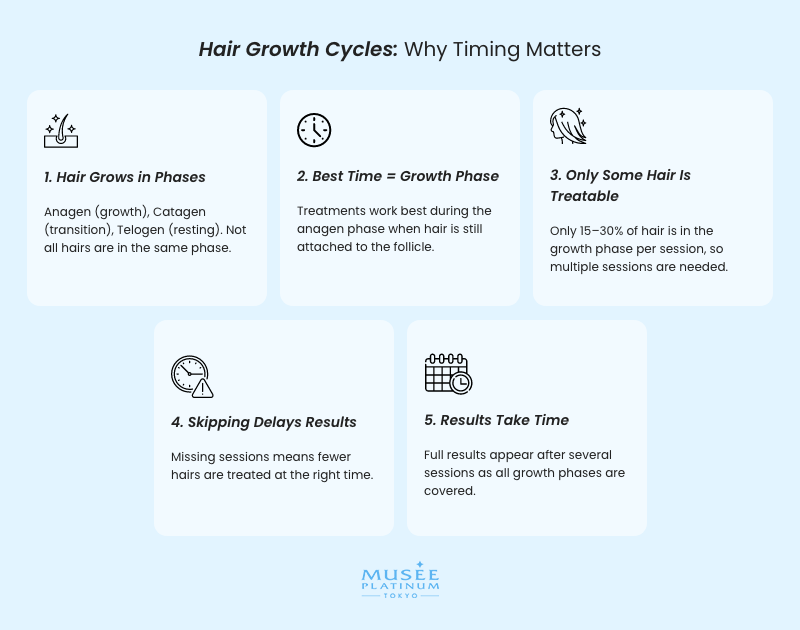
Ingrown hair occurs when a strand grows back into the skin instead of exiting through the follicle. This can cause redness, itchiness, and raised bumps that often resemble acne. It usually results from shaving, waxing, or friction caused by tight clothing. To reduce your risk, exfoliate regularly to keep follicles clear, use a clean, sharp razor, and shave in the direction of hair growth. Avoid wearing tight clothing in areas such as the bikini line, underarms, and legs.
Professional hair removal treatments go beyond temporary fixes. They target the hair at the root, providing longer-lasting results with less irritation. Options like S.S.C. Hair Removal help reduce regrowth, improve skin texture, and lower the chances of ingrown hairs forming again. These treatments are also gentler on sensitive skin compared to frequent shaving or waxing.
For those dealing with persistent bumps, learning how to get rid of ingrown hair through a long-term solution like this can be a game changer.
S.S.C. Hair Removal is designed to be gentle, but its suitability can depend on factors like your skin tone, hair colour, and any underlying skin sensitivities. It may not be ideal for everyone, which is why a professional consultation is essential. Our specialists will assess your skin and hair profile to determine the safest and most effective treatment plan tailored to your needs.
This personalised approach is critical if you're exploring how to get rid of ingrown hair without triggering further irritation.
The number of sessions varies based on the treatment area, your hair type, and your skin's response. Many clients notice a reduction in regrowth after just a few sessions, with smoother, clearer skin over time. For long-term results, a full course of treatments spaced over several months is typically recommended.
If you're serious about finding out how to get rid of ingrown hair for good, staying consistent with your sessions is key to success.
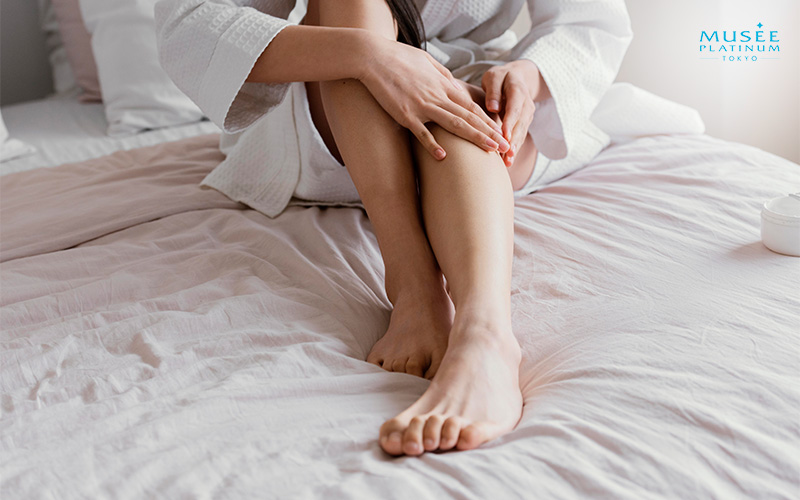
Ingrown hair may be a common skin concern, but that does not mean you have to live with the discomfort, irritation, or impact on your confidence. Understanding what causes these bumps and how your grooming habits or daily routine might contribute is the first step towards healthier, clearer skin.
From gentle exfoliation and proper shaving techniques to consistent moisturising, minor adjustments can go a long way in reducing the risk. However, if ingrown hairs continue to recur, home care may not be sufficient.
Musee Platinum Tokyo's S.S.C. Hair Removal offers a professional, long-term solution for those seeking smoother skin with fewer flare-ups. The treatment uses light-based technology and a plant-based gel to slow regrowth while supporting overall skin comfort.
If you are ready to explore how to get rid of ingrown hair effectively, our team is here to guide you. Book a session today and take your first step towards soft, even, and worry-free skin.
